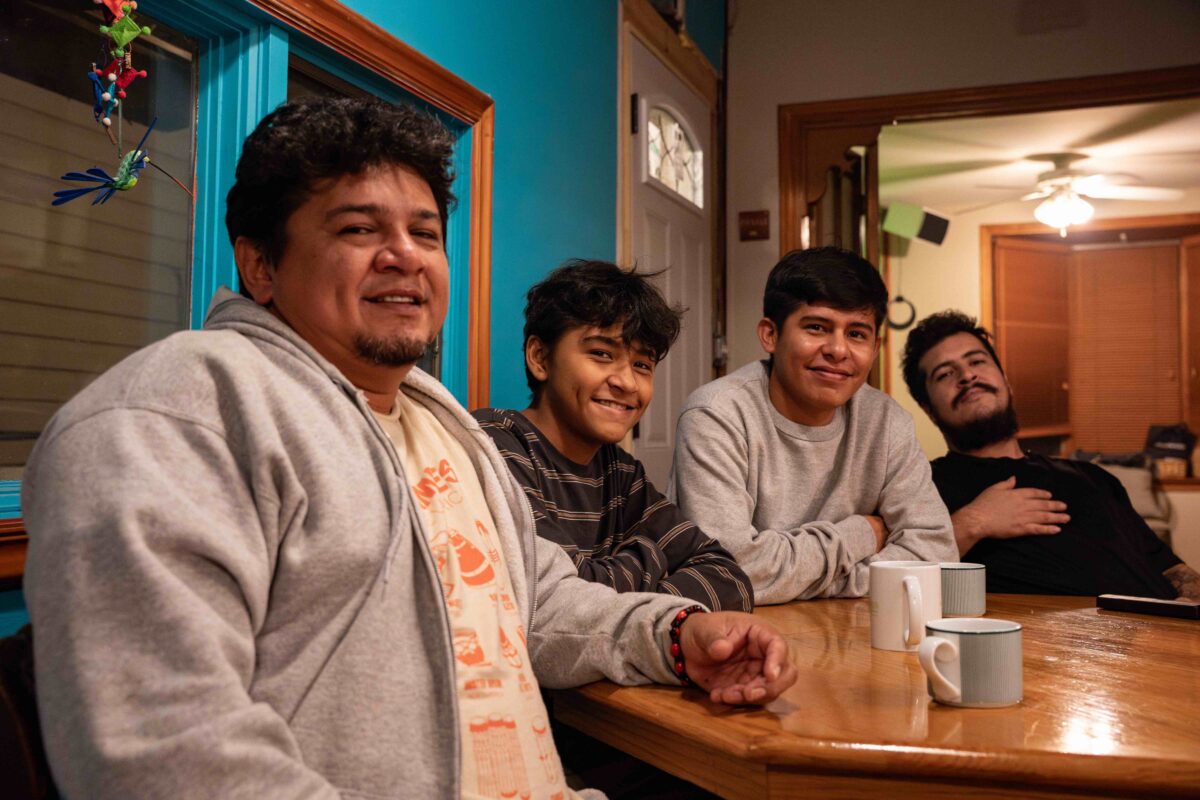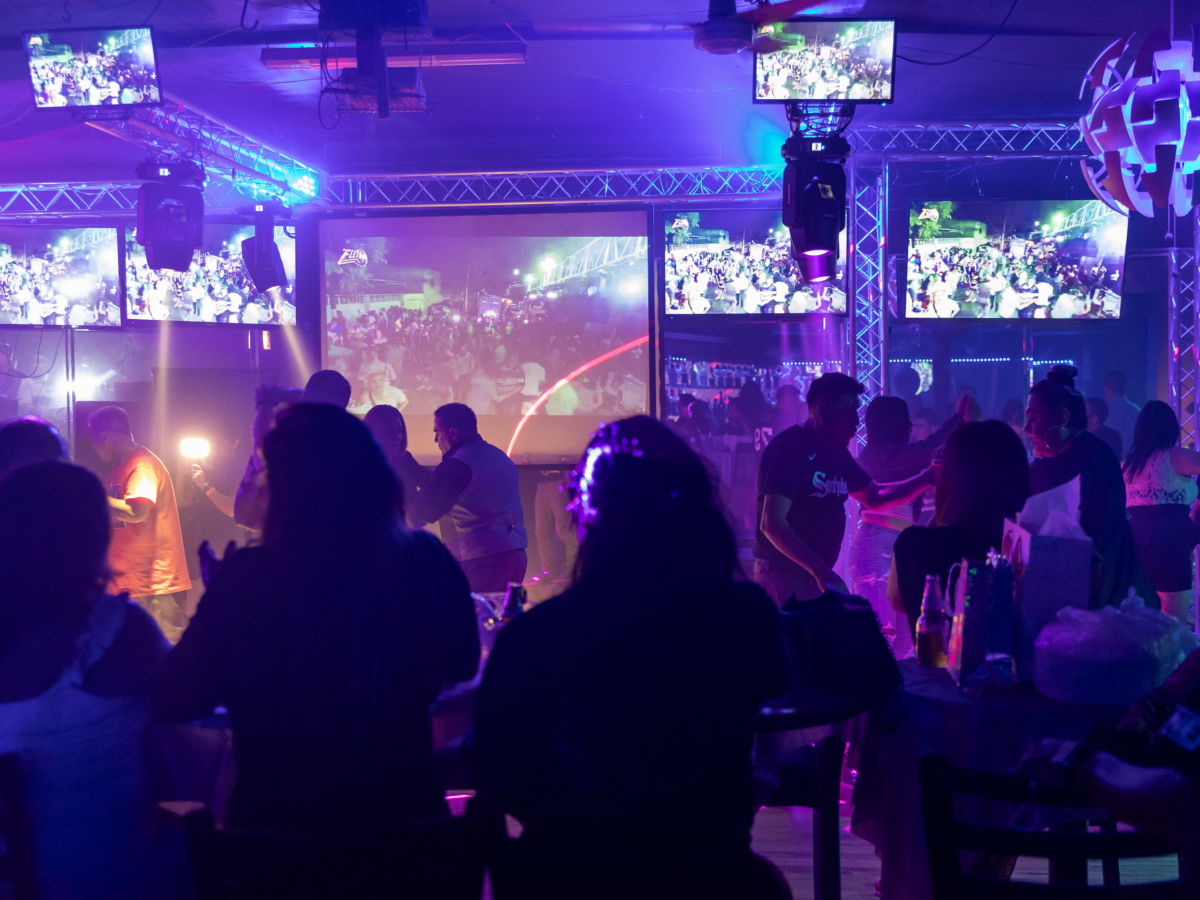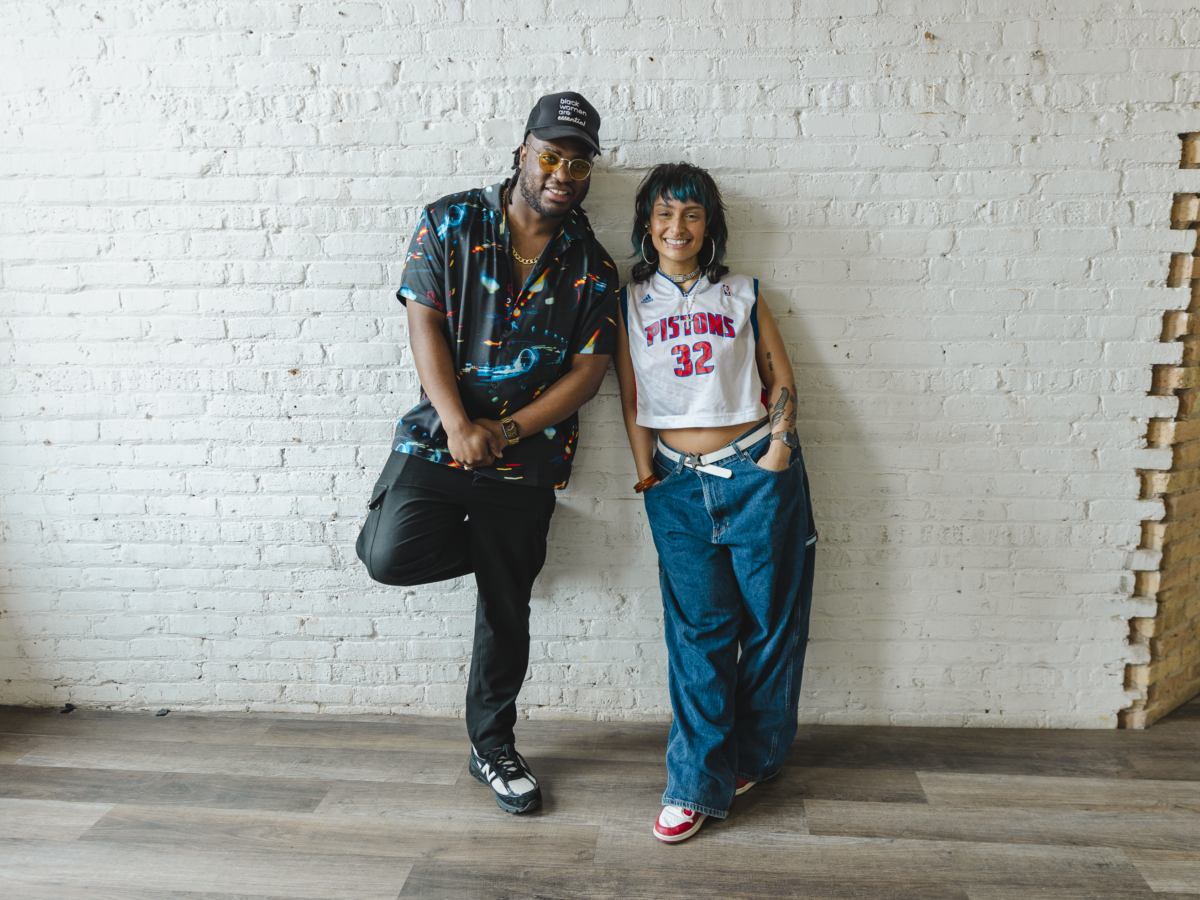Altepee, a music collective a that hails from Veracruz, Mexico, recently visited Chicago as resident artists at 18th Street Casa de Cultura in Pilsen, where they hosted music lessons for children and adults in Pilsen. The group uses their region’s traditional folk music, son jarocho, to create learning opportunities to share with various communities in their travels.
Sael Blanco founded the collective with fellow local musicians in southern Veracruz eighteen years ago. They aimed to preserve the traditions of their communities and Indigenous groups, such as the Nahuas and Popolucas, whose cultural heritage has been largely forgotten over the decades.
Their music features string and percussion instruments: the leona, a large four-string bass, and the four-string requinto jarocha and eight-string jarana jarocha, both similar to small guitars. The musicians play these around a tarima, a square wooden platform performers dance on. This percussion instrument is the centerpiece of the celebration.
Today, Altepee has twelve members who travel throughout Mexico and the United States. They hold music workshops and participate in local radio programs, creating spaces to share their culture and foster dialogue.
This past month, the collective was represented in Chicago by Pipo Juárez, Gemaly Padua, Ulises González, Blanco, and his fifteen-year-old son, Emiliano. While here, the musicians taught music lessons at 18th Street Casa de Cultura.
The group drew comparisons between gentrification in Pilsen and Veracruz, and urged the community to take a collective approach to resistance, a message the organization has been promoting on its tours.
This interview was conducted in Spanish. It has been edited for clarity and length.
What was your first connection with the collective?
Emiliano: I’ve been part of the collective practically since I was born. But I’ve been more actively involved for about five years now.
Pipo: My first connection was as a fan. I loved all the music they made. I’m from the central part of Veracruz. They came to visit, just like they came here [to Chicago], to share and connect.
Ulises: I discovered this music at thirteen through my community and neighbors who played it. But I officially joined this process two years ago. It started as a hobby.
Sael: In the past, it was much more difficult to access music, books, or even knowledge about your own culture. Those of us who started the collective were already musicians, and we saw an opportunity to come together and start offering workshops. We thought, “This is how we’ll preserve the music, specifically campesino music.” In a way, that brought us closer to our communities. Even though we were already living here, it made us look around and see things differently.
Can you tell me more about the themes in this music?
Ulises: A lot of this music’s speech lies in “singing about the everyday,” what exists in our surroundings and how we perceive nature. It awakened a curiosity in me to understand what I was singing about. That connection eventually became part of my identity.
Sael: It’s a part of our identity, of our people. It’s something passed down through generations. Today, it’s taught in workshops, but traditionally it was shared within families, through grandparents, fathers, mothers.
Connecting with elders enabled us to learn about the paths our ancestors walked, the uses of different plants, and the practice of making offerings. It broadens our perspective on reality and helps us take action.
What are the key instruments of the son jarocho?
Ulises: There are the string instruments, including the requinto jarocho, which serve as a guide and carry the melody; the jarana jarocha, used to introduce the music and as an accompaniment to the melody; and the leona, which acts as a bass. We also use percussion instruments like the quijada de burro or the tarima.
The tarima, a square box onto which dancers step, is the centerpiece of the celebration in which the son jarocho is performed. As musicians, we play for the dancers.
Sael: Because it grows in our region, our instruments are made from cedar. Over the years, the community has learned to work with this wood. I make instruments and make my living out of it. If you’re interested in the music or this tradition, you also have to care about the land—everything good and bad about it.
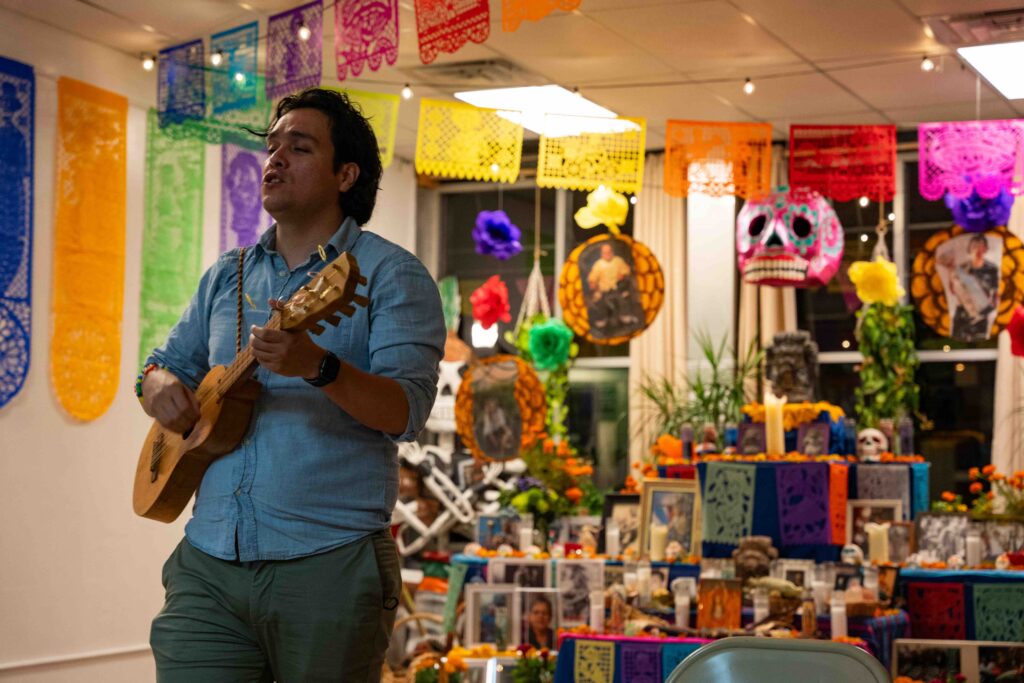
How would you define the relationships within the collective?
Sael: I always heard that collectives were formed in response to a specific problem and dissolved afterward. As a collective, we see ourselves as lifelong connections, like family. Music reminds us of the importance of being together. It’s a call not just to the mind but to the heart and spirit. In our workshops, we don’t just share music; we also share this message.
What has been your community’s response to the collective’s work?
Sael: When you host a fandango, [a type of dance party that originated Veracruz] you don’t get paid. You prepare food for everyone; you invest. It’s about giving. We’re not wealthy people. We’re working-class folks, laborers, campesinos from the outskirts of town. Now our families understand. Now the community embraces and supports us. But that wasn’t always the case. Over time, as you expose people to the communal processes of collectives, they grow closer.
Emiliano: I live in an area heavily impacted by violence. Many young people there were involved in petty crimes, but they joined the collective and began distancing themselves from that. They started coming to us instead.
Why is it important to share your message today?
Sael: We live in times when people don’t look at one another. These cultural practices offer alternatives to a way of life driving us toward an abyss. Many of today’s social challenges stem from a lack of knowledge about how to live collectively or in community. We must learn to work together to resolve many societal issues.
Pipo: It’s a bridge that connects people, builds community, and fosters healthy environments for sharing knowledge. That’s a big part of what Altepee does: building bridges regardless of geography.
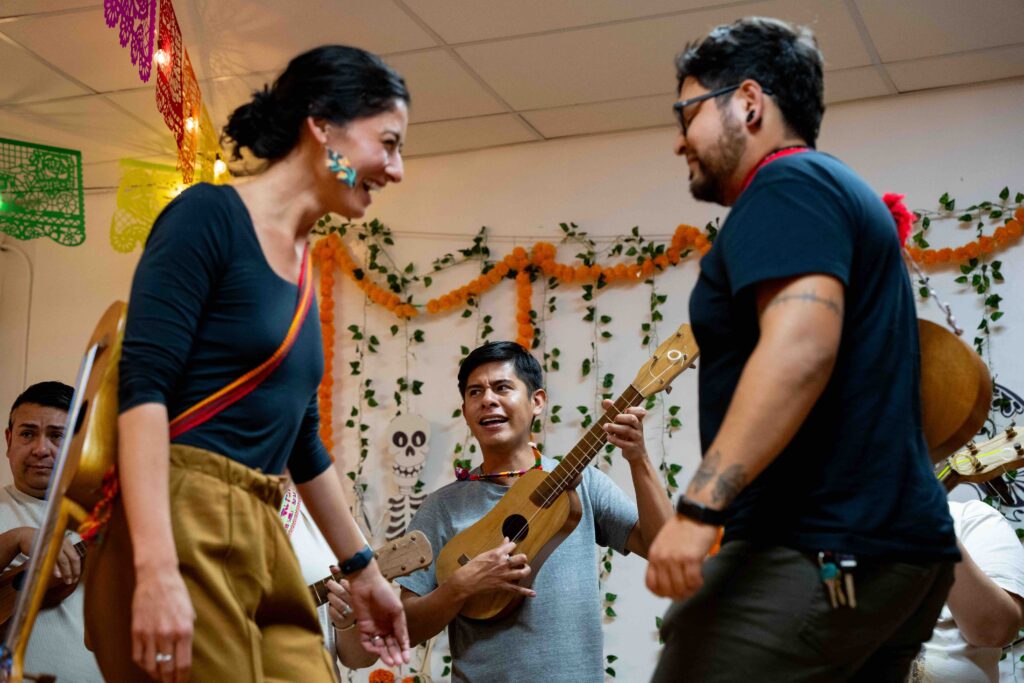
That bridge has reached Chicago. How did that happen?
Sael: You start by working in your community and connecting with neighbors, but eventually, you realize it’s not enough. Then you connect with another neighborhood, state, and, eventually, another country. In places like Chicago, there’s a rich cultural diversity—all valuable, none more than another. However, segregation has prevented communities from getting to know one another, creating many internal conflicts.
For over twelve years, we’ve had a connection with Jarochicanos [a Chicago-based music group]. But we know [son jarocho] music has been in Chicago for over thirty years. Thanks to the 18th Street Casa de Cultura space, we are resident artists, allowing us to offer workshops and share our music.
What happens during these workshops?
Sael: The same work we do back home, but with communities here who don’t just want to make music, but also think about building community—something often denied in this society. These workshops have also been spaces where children can come, listen, and connect with music rooted in tradition.
We come here hoping to contribute, but we also learn from the processes happening in neighborhoods like this [Pilsen]. Gentrification exists here, just as displacement happens in southern Veracruz due to mega-projects.
What similarities do you see between these struggles?
Ulises: Back home, you see the power of industry so clearly. Every night, there’s a glow in the sky from the flares. It’s striking. We often compare that glow to Tolkien’s Eye of Sauron [in The Lord of the Rings]. Society teaches you to ignore it.
Sael: Over there [south Veracruz], it’s like, “How beautiful is Mother Nature… Oh, there’s oil under there? Let’s extract it.” Displacement happens everywhere communities create something beautiful.
Many migrants leave their homes, families, everything behind to come here. They build something new, only for it to be taken away, too. Even our identities are on sale. They think that it’s something they can pay for. That is a mistake. I believe art and culture have always been a line of defense against that.
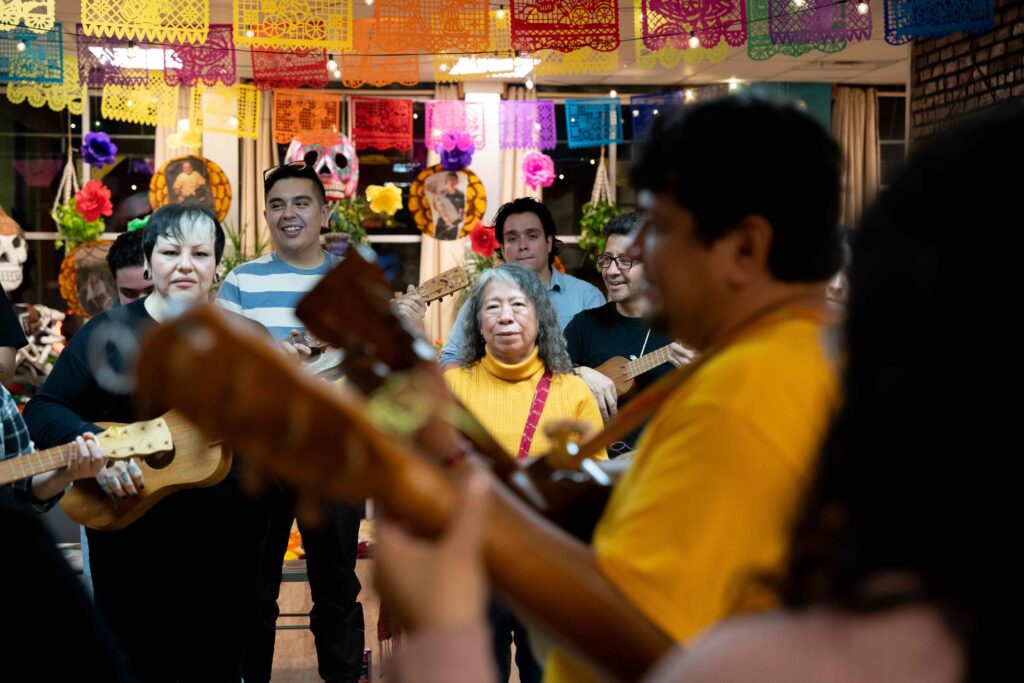
You are returning to Veracruz, but what’s next? Do you have any plans to come back to Chicago?
Sael: We hope to return to Chicago next year, in March, or the summer when it’s not cold. Meanwhile, we always look for other places to visit in the U.S.
Although only four of us are here now, there are many more of us doing the same work elsewhere. Wherever you are, look around, look at your neighborhoods, your communities. You’ll find people working to preserve something that belongs to all of us.
Alonso Vidal is a multimedia journalist and writer from Lima, Peru, based in Chicago.

